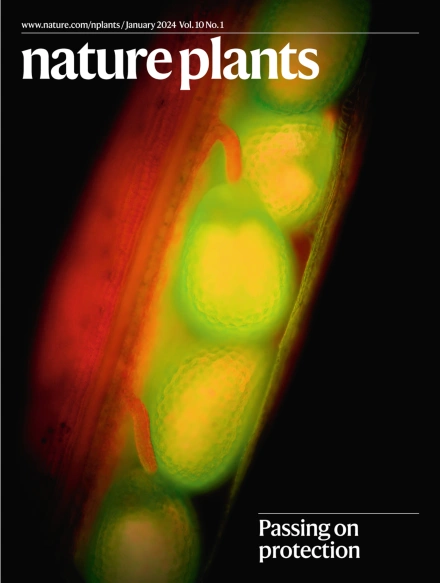Kinesins control male germ unit assembly for sperm delivery in Arabidopsis
IF 13.6
1区 生物学
Q1 PLANT SCIENCES
引用次数: 0
Abstract
Unlike flagellated sperm in animals, which use molecular motors for motility, immotile sperm cells of angiosperms rely on cytoplasmic transport within pollen tubes to reach female gametes for fertilization. However, the mechanism underlying sperm cell transport in angiosperms remains unknown. Since the 1970s it has been observed that the two sperm cells, or their progenitor generative cell, are transported together with the pollen vegetative nucleus as part of an aggregated structure called the male germ unit, which forms within the pollen cytoplasm. Here, using super-resolution and live-cell imaging, we show that two kinesins, HUG1 and HUG2, form a kinesin cage encasing a microtubule cage around the generative cell or sperm cells and vegetative nucleus, tethering them into a single unit during Arabidopsis pollen development. Loss of HUG proteins disrupts male germ unit organization, leading to failed sperm delivery and complete plant sterility. These findings uncover the genetic and cellular basis of male germ unit organization and highlight its essential role in sperm transport for plant fertilization. Here Chang et al. found that two kinesins, HUG1 and HUG2, form a kinesin cage encasing the vegetative nucleus and a distinctive double-layered kinesin microtubule cage around the generative cell, tethering them into a male germ unit and aiding sperm delivery.

运动蛋白控制拟南芥雄性生殖单位组装以实现精子的传递。
与动物的鞭毛精子利用分子马达运动不同,被子植物的不动精子依靠花粉管内的细胞质运输到达雌性配子进行受精。然而,被子植物中精子细胞运输的机制尚不清楚。自20世纪70年代以来,人们观察到两个精子细胞或它们的祖生殖细胞与花粉营养核一起运输,作为花粉细胞质内形成的称为雄性生殖单位的聚集结构的一部分。本研究利用超分辨率和活细胞成像技术,研究人员发现,在拟南芥花粉发育过程中,HUG1和HUG2两种驱动蛋白形成一个驱动蛋白笼,包裹在生殖细胞或精子细胞和营养核周围的微管笼中,将它们捆绑成一个单一的单元。HUG蛋白的缺失破坏了雄性生殖单位的组织,导致精子传递失败和植物完全不育。这些发现揭示了雄性生殖单位组织的遗传和细胞基础,并强调了其在植物受精精子运输中的重要作用。
本文章由计算机程序翻译,如有差异,请以英文原文为准。
求助全文
约1分钟内获得全文
求助全文
来源期刊

Nature Plants
PLANT SCIENCES-
CiteScore
25.30
自引率
2.20%
发文量
196
期刊介绍:
Nature Plants is an online-only, monthly journal publishing the best research on plants — from their evolution, development, metabolism and environmental interactions to their societal significance.
 求助内容:
求助内容: 应助结果提醒方式:
应助结果提醒方式:


